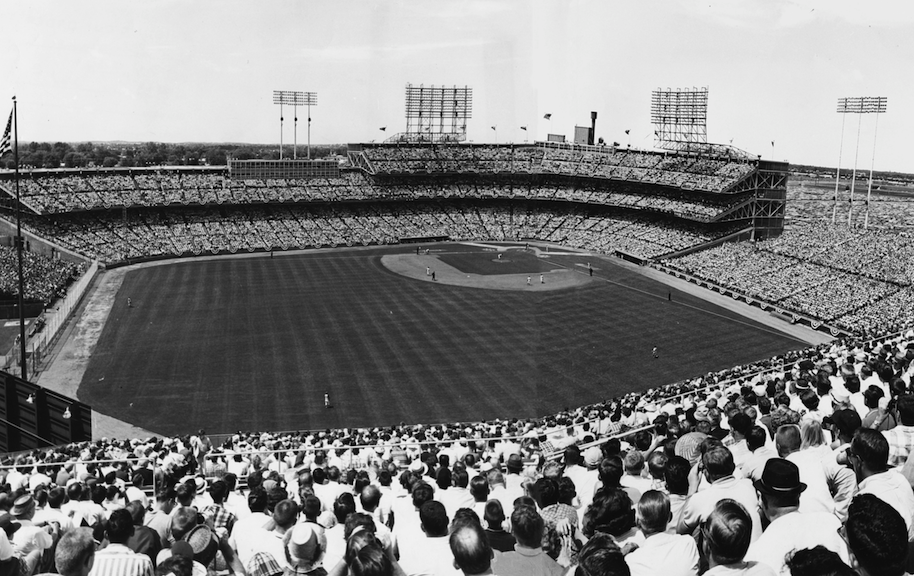1.4. How I Think About You and Me#
This is a picture from July 13th during the 1965 Major League Baseball All Star game in Metropolitan Stadium in Bloomington, Minnesota. I like this image as an analogy to how I think of scientists and…you.

1.4.1. The Greatest Ballplayers#
At that time, MLB had 500 professional players and this game was notable because it featured 19 future Hall of Famers. That means that 34 professionals on the field that day were not going into the history books, nor were the other 447 who weren’t invited. Those 19 were pretty special athletes.
I guarantee you that when they played, their colleagues were often in awe. The 481 guys superbly talented enough to make their living by playing a professional sport, but not going to The Hallof Fame, know that among them there are players who are special. (And for the rest of their lives, they talked about what it was like to play with Henry Aaron, Mickey Mantle, and the others.) Athletes are not ashamed to celebrate their super-human colleagues. Stories will be told, legends will be created, and songs will be sung about those guys — because they were great.
1.4.2. The Greatest Scientists#
Just like it would be impossible to write the history of baseball without special reference to the greatest players of all, so too it’s impossible to write the story of science without reference to the greatest among us. Just like the regular professional athletes, those of us who make our living as professional scientists celebrate our heroes: the ones who saw the world differently from everyone else. Those of us who’ve been privileged to actually work with Nobel Laureates know this to be the case.
Perhaps you’re not surprised at my impatience with the “mad scientist” TV image. Marty McFly’s Doc Brown is my least favorite example of a scientist.
So, in Quarks, Spacetime, and the Big Bang, I’m all-in with the Great Scientist Theory and you’ll get to meet many of the men and women who changed the world with their imaginations and technical skills.
Wait. Baseball players from 1965??
Glad you asked. Yup. I just explained why, but wait, you’re also at this game.
1.4.3. The Greatest Spectators#
If you’ve never played baseball or softball, attending a baseball game can be a little overwhelming. The rules can seem strange and you’re probably puzzled by the seriousness of many of the spectators around you. You’ll even see many of them with pencils and scorecards and taking part in earnest discussions about some of the events that happen on the field. They clearly appreciate pitching, fielding, and hitting; strategies; good and bad play; and importantly, fundamental skills. They grasp the game differently from others.
If you’ve never taken a physics course or read one of the hundreds of terrific books written to help non-specialists appreciate both historical and modern ideas and discoveries — you’re perhaps like that spectator over on the third base side, about 15 rows up. She’s attending her first game and she’s a little puzzled about what just happened on the field.
I view my job in Quarks, Spacetime, and the Big Bang as taking you from being the confused fan, to someone who won’t play the game professionally but by the time we’re done will be able to judge what’s good, what’s bad, and what’s amazing about both the scientists not headed for the history books as well as the ones who will find themselves immortalized with universal admiration.